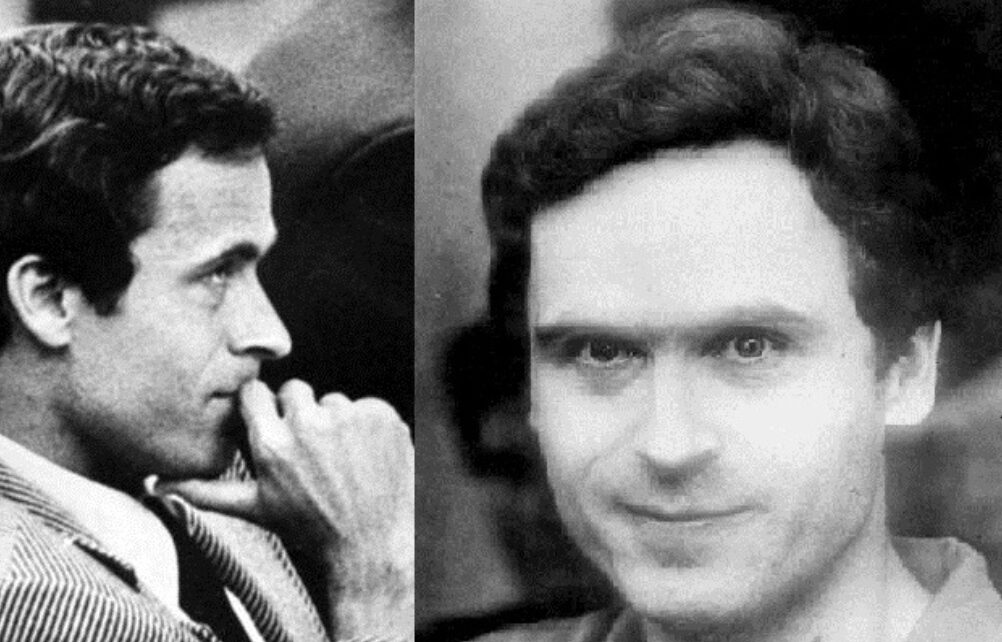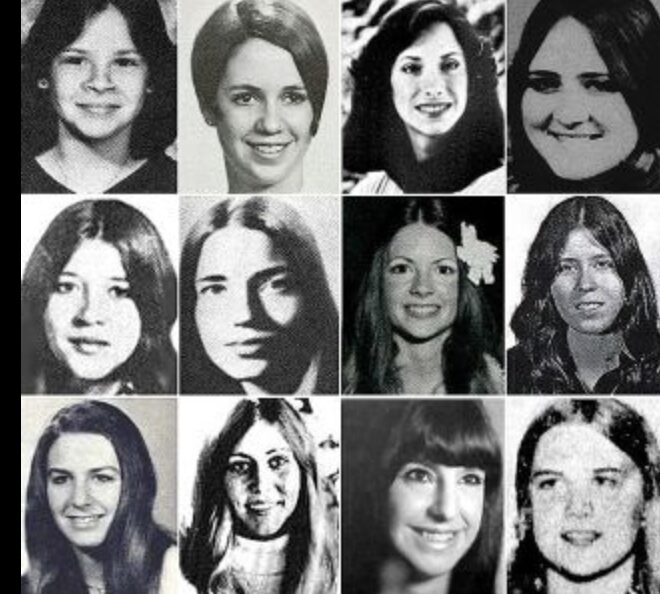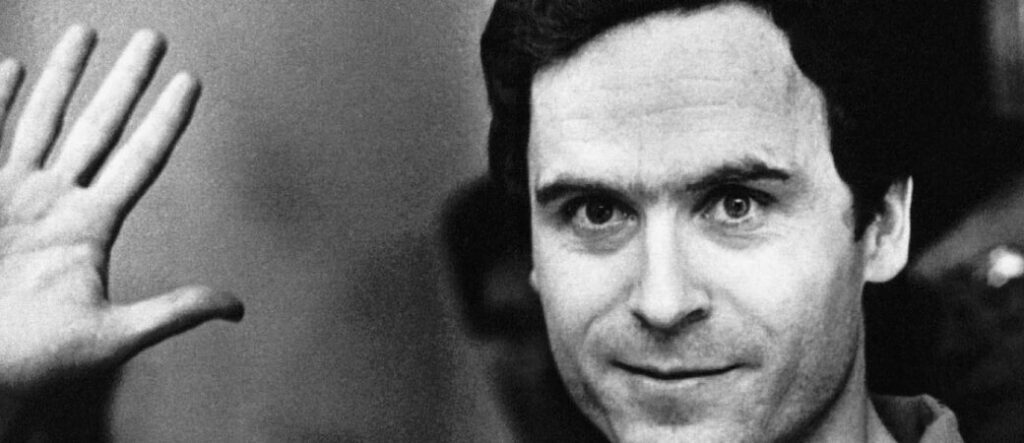Physical Address
304 North Cardinal St.
Dorchester Center, MA 02124
Physical Address
304 North Cardinal St.
Dorchester Center, MA 02124

During the 1970s, Ted Bundy carved a path of terror across multiple states, leaving behind one of the most documented and studied crime sprees in American history. Ted Bundy’s cross-country killing spree claimed at least 20 confirmed victims, though experts believe the actual number may be much higher. His crimes stretched from Washington State to Florida, creating a trail of evidence that would eventually lead to his capture and execution. Read all about Ted Bundy’s Bloody Trail.
What made Bundy particularly dangerous was his ability to appear normal and trustworthy. Unlike typical portrayals of serial killers, he was charming, intelligent, and studying law. This facade allowed him to approach victims without raising suspicion, often pretending to need help or posing as an authority figure.
The investigation into Bundy’s crimes revolutionized forensic science and criminal profiling. From bite mark evidence that helped secure his conviction to witness testimonies that linked him across state lines, his case became a landmark in criminal justice. His story reveals how one man’s calculated violence changed investigative methods and left an indelible mark on American criminal history.

On January 15, 1978, Ted Bundy broke into the Chi Omega sorority house at Florida State University in Tallahassee, killing two women and injuring two others in less than 15 minutes. The brutal attack shocked the campus community and marked one of the most infamous crimes in Tallahassee’s history.
The attack began in the early morning hours of January 15, 1978. Bundy entered the Chi Omega sorority house located near the Florida State University campus.
The sorority house sat at the center of campus social life. Students often visited the nearby Sweet Shop and Red Garter nightspot before returning to their rooms.
Bundy moved through the house between 2:45 and 3:00 AM. He used a wooden club to attack sleeping victims in their beds. The entire rampage lasted less than 15 minutes.
After leaving Chi Omega, Bundy walked four blocks away. He attacked another Florida State University student in her apartment before disappearing into the night.
The attacks went undetected for hours. Roommates discovered the injured victims when they woke up later that morning.

Four women became victims during Bundy’s attack on the Chi Omega house. Two died from their injuries while two others survived.
Victims who died:
Survivors:
Lisa Levy was only 20 years old when Bundy attacked her. She was a Florida State University student living in the sorority house.
Karen Chandler and Kathy Kleiner both survived their injuries. Kleiner later credited her survival to the fact that her roommate’s screams likely scared Bundy away.
Margaret Bowman was found in her room with a nylon stocking around her neck. The medical examiner determined she had been strangled and beaten with a blunt object.
The Tallahassee Police and Leon County Sheriff’s Department responded to the scene that morning. Officers found evidence of extreme violence throughout the sorority house.
Crime scene investigators collected physical evidence from multiple rooms. They found bite marks on Lisa Levy’s body, which would later become crucial evidence in Bundy’s trial.
The wooden club used in the attacks was never recovered. However, investigators found other evidence including hair fibers and bodily fluids.
Key evidence collected:
The 1970s crime scene investigation techniques were limited compared to modern forensics. Despite this, investigators preserved enough evidence to build a case against Bundy.
The bite mark evidence became controversial during Bundy’s trial. Defense attorneys challenged its use, claiming it was unreliable scientific evidence.
Police also investigated reports of a suspicious man seen near the sorority house. Witnesses described someone matching Bundy’s appearance in the area that night.
Theodore Robert Bundy’s killing spree spanned multiple states from 1974 to 1978, targeting young women across Washington, Oregon, Utah, Colorado, and Florida. His methodical approach involved feigning injury or impersonating authority figures to lure victims.
Bundy’s crimes stretched from the Pacific Northwest to the Southeast. He began his confirmed attacks in Washington state before moving through Oregon, Utah, and Colorado.
The serial killer’s final murders occurred in Florida after his escape from custody. Ted Bundy confessed to 30 murders across seven states, though investigators believe the actual number may be closer to 100.
Key States and Timeframes:
Some investigators suspect Bundy’s crimes began earlier. The 1961 disappearance of Ann Marie Burr in Washington remains connected to theories about his earliest possible victim.
Bundy’s confirmed killing spree began in 1974 with attacks on college-aged women in Washington. Lynda Ann Healy became his first confirmed murder victim on February 1, 1974.
Healy vanished from her University of Washington basement apartment. Her disappearance marked the beginning of a pattern targeting young, attractive women with long dark hair.
Over six months in 1974, Bundy abducted at least eight more women in Washington and Oregon. His attacks grew bolder, including a brazen daylight kidnapping at Lake Sammamish State Park.
The Lake Sammamish incident involved Bundy approaching multiple women while using the name “Ted.” Two women, Janice Ott and Denise Naslund, disappeared that day and were later found murdered.
Bundy’s method involved feigning injury or impersonating authority figures to gain victims’ trust. He commonly used fake casts, crutches, or arm slings to appear helpless.
The killer would ask for help carrying books or loading items into his car. Once victims were close enough, he would overpower them and force them into his vehicle.
Common Tactics:
Bundy typically attacked women alone in isolated areas or parking lots. He would sexually assault and murder victims before disposing of bodies in remote locations.
The serial killer often returned to dump sites to perform additional acts with decomposing remains. This necrophilic behavior distinguished him from other killers and demonstrated his complete lack of empathy.
His ability to appear normal and trustworthy allowed him to operate across state lines for years. Bundy’s campaign of terror continued until his final capture in Florida following the murders at a sorority house and the kidnapping of 12-year-old Kimberly Dianne Leach.
The Ted Bundy case relied on multiple forms of evidence including physical traces, witness accounts enhanced through hypnosis, and groundbreaking forensic dental analysis. These techniques helped investigators build a case against one of America’s most notorious serial killers.
Police collected various types of physical evidence from crime scenes linked to Bundy’s murders. Evidence in the Ted Bundy case included witness accounts, marks from weapons, fingerprint smudges, blood evidence, and bite marks.
Crime scene investigation teams found hair fibers in several locations. These fibers were compared to samples taken from Bundy after his arrest. Investigators also recovered clothing items and personal belongings from victims at various crime scenes.
Bundy’s Volkswagen provided crucial physical evidence. The orange Volkswagen was actually a stolen vehicle from Pensacola, Florida. An officer spotted the suspicious vehicle during a routine patrol at 10 p.m.
Key Physical Evidence Found:
The Florida Department of Law Enforcement processed much of this evidence using available forensic techniques of the 1970s.
Several survivors provided testimony about their encounters with Bundy. Some witnesses underwent hypnosis to help recover memories of their attacks. This hypnotic memory enhancement was controversial in courts during the late 1970s.
Hypnotic testimony faced legal challenges under the Frye test established in Frye v. United States. Courts had to decide if hypnotically refreshed testimony was reliable enough for trials. Different states handled this evidence differently.
Some jurisdictions allowed hypnotic testimony with restrictions. Others banned it completely after cases like State v. Hurd raised questions about memory reliability. The debate centered on whether hypnosis actually improved memory or created false memories.
Legal Cases Affecting Hypnotic Evidence:
Eyewitness testimony without hypnosis proved more reliable in Bundy’s prosecutions.
Bite mark evidence became the most famous forensic technique used against Bundy. A forensic odontologist compared bite marks found on victims to impressions of Bundy’s teeth. This analysis provided a direct physical link between Bundy and his crimes.
A forensic odontologist matched bite marks from a victim to Bundy’s teeth. This evidence proved crucial in his conviction and death sentence in 1980. The bite mark analysis was groundbreaking for its time.
Blood evidence analysis was more limited in the 1970s. Investigators could determine blood type but not individual DNA profiles. They used ABO blood typing to include or exclude suspects from crime scenes.
Bundy’s trial became a landmark moment for forensic dentistry. It increased acceptance of bite mark analysis as courtroom evidence. The case helped normalize forensic science in criminal investigations.
DNA analysis was not available during Bundy’s original investigations in the 1970s. The technology did not exist for criminal cases until the mid-1980s. Investigators relied on older forensic methods like blood typing and physical comparisons.
National criminal databases were also limited during this period. The FBI’s systems focused mainly on fingerprints and basic criminal records. Modern databases that cross-reference DNA, dental records, and other forensic data came later.
Forensic Limitations in the 1970s:
If Bundy’s crimes occurred today, DNA evidence would likely have solved the cases much faster. Modern forensic techniques would have provided definitive links between crime scenes and the perpetrator within weeks rather than years.
Ted Bundy’s final capture came after a routine traffic stop in Pensacola, Florida, on February 15, 1978. The arrest revealed his true identity as one of America’s most wanted fugitives, ending his deadly spree that had terrorized multiple states.
Pensacola Police Officer David Lee spotted a suspicious orange Volkswagen Bug driving slowly through a residential neighborhood at 1:30 AM. The vehicle had been reported stolen from Tallahassee several days earlier.
When Officer Lee attempted to pull over the car, the driver tried to flee. The chase ended quickly when the Volkswagen crashed into a curb. The driver was arrested and gave his name as Kenneth Raymond Misner.
Key Evidence Found:
The suspect appeared nervous and gave conflicting stories about his identity. Pensacola Police noticed his behavior was unusual for a simple car theft case.
His fingerprints were sent to the FBI for identification. Within hours, authorities discovered they had captured Theodore Robert Bundy, who had escaped from a Colorado jail seven weeks earlier.
The FBI fingerprint match confirmed that Kenneth Misner was actually Ted Bundy, wanted for multiple murders across several states. Leon County Sheriff’s Department immediately sent detectives to Pensacola to question him about recent crimes in Tallahassee.
Bundy initially maintained his false identity but eventually admitted who he was. Investigators from the State of Florida linked him to the Chi Omega sorority house murders and the disappearance of 12-year-old Kimberly Leach.
Timeline of Identification:
Tallahassee Police had been searching for Bundy since the sorority house attacks. Physical evidence found in his possession connected him directly to the crimes. Bundy’s arrest ended his ability to elude capture and marked the beginning of his final legal battles.
Ted Bundy’s legal battles spanned multiple states and years, creating unprecedented media attention that complicated jury selection and forced venue changes. His trials became courtroom theaters where he represented himself, cross-examined witnesses, and even proposed marriage during proceedings.
Finding unbiased jurors proved nearly impossible due to massive media coverage. Pretrial publicity showed 78% of people viewed Bundy as “remorseless” before his trial even began.
The judge received over 1,200 letters from the public demanding more camera time during the proceedings. This unprecedented attention made selecting impartial jurors extremely difficult.
Key Challenges:
Prosecutors worried that any mention of Bundy being a suspected mass murderer could cause a mistrial. The biggest problem facing prosecutor Dave Yocum was safeguarding against the possibility of a mistrial due to this widespread speculation.
Bundy’s legal team filed multiple requests to move trials to different locations. The State of Florida handled most of his major murder trials after his escape from Colorado custody.
His first trial began February 23, 1976, in Utah for Carol DaRonch’s kidnapping. This case had less publicity than his later Florida proceedings.
Trial Locations:
The Florida trials generated the most media attention. His first trial date was set for June 25, 1979, in Miami, Florida for the brutal Chi Omega sorority attacks.
Bundy’s decision to represent himself created dramatic courtroom scenes. He cross-examined witnesses and displayed his legal knowledge while facing first-degree murder charges.
Most Shocking Moment: During the Kimberly Leach trial, Bundy proposed to girlfriend Carole Ann Boone while she testified. She accepted, creating a legal marriage under Florida law.
The jury found Bundy guilty on July 24, 1979 for the Chi Omega murders. Key evidence included bite mark analysis matching his dental impressions to victim Lisa Levy.
His second Florida trial resulted in another conviction. Bundy was found guilty of abducting and murdering Kimberly Diane Leach after the jury deliberated for seven hours and 15 minutes.
Death Sentences Received:
The Supreme Court of Florida ultimately upheld his convictions after lengthy appeals processes.
Ted Bundy faced multiple death sentences following his convictions in Florida courts. His legal team pursued extensive appeals through the Florida Supreme Court system over nearly a decade.
The jury found Bundy guilty of the Chi Omega sorority house murders on July 24, 1979. Judge Edward Cowart imposed death sentences for killing Lisa Levy and Margaret Bowman.
Bundy received his second death sentence during the same trial. The court also sentenced him for the brutal attacks on other Chi Omega members.
His third and final death sentence came on February 12, 1980. This followed his conviction for murdering 12-year-old Kimberly Leach in Lake City, Florida.
Bundy’s Death Sentences:
The State of Florida now held three death sentences against Bundy. Each conviction carried the ultimate penalty under Florida law.
Bundy refused to accept his fate and began extensive appeals in 1982. He enlisted new legal help and challenged his Chi Omega murder convictions to the Florida Supreme Court.
The Supreme Court of Florida denied his appeal for the Chi Omega case. Bundy then appealed his Kimberly Leach trial verdict in May 1985.
His appeals claimed multiple trial errors. These included controversial bite mark evidence and the hypnosis of witnesses during testimony.
The Florida Supreme Court affirmed both his convictions and death sentences. Bundy’s legal team filed numerous postconviction motions under Florida Rule of Criminal Procedure 3.850.
All appeals were ultimately unsuccessful. After years of legal battles, Bundy was executed on January 24, 1989.
Ted Bundy’s case continues to influence forensic science decades after his 1989 execution, while investigators still work to connect him to unsolved murders through DNA evidence. His crimes shaped modern investigative techniques and remain subjects of academic study.
Bundy’s case marked a turning point in criminal investigation methods. His ability to evade capture for years exposed weaknesses in how police departments shared information across state lines.
The discovery of Ted Bundy’s blood sample in Florida revolutionized cold case investigations. The Florida Department of Law Enforcement found the vial in 2011, taken during his 1978 arrest.
This blood sample allowed scientists to create Bundy’s first complete DNA profile. The profile includes all 13 core markers used in forensic testing.
Key forensic advances from Bundy’s case:
Bundy’s DNA profile was uploaded to the FBI’s national database to help solve decades-old cases. Investigators sent bulletins to law enforcement agencies nationwide.
Tacoma Police reopened the 1961 disappearance of Ann Marie Burr. The 8-year-old girl vanished from her home, and Bundy remains a suspect.
Detective work focuses on evidence from the 1960s and 1970s. Officers examine letters, stamps, and other items that might contain Bundy’s DNA.
Active investigation areas:
Bundy’s crimes continue to influence criminal justice education. Law schools and criminology programs study his case to understand serial killer behavior patterns.
His time at the University of Washington and University of Utah Law school raises questions about how institutions handle dangerous individuals. Researchers examine warning signs that were missed.
Media coverage of Bundy’s case changed how society views serial killers. His clean appearance and intelligence challenged stereotypes about violent criminals.
Academic studies focus on his manipulation tactics and psychological profile. Researchers use his case to develop better threat assessment tools for law enforcement.